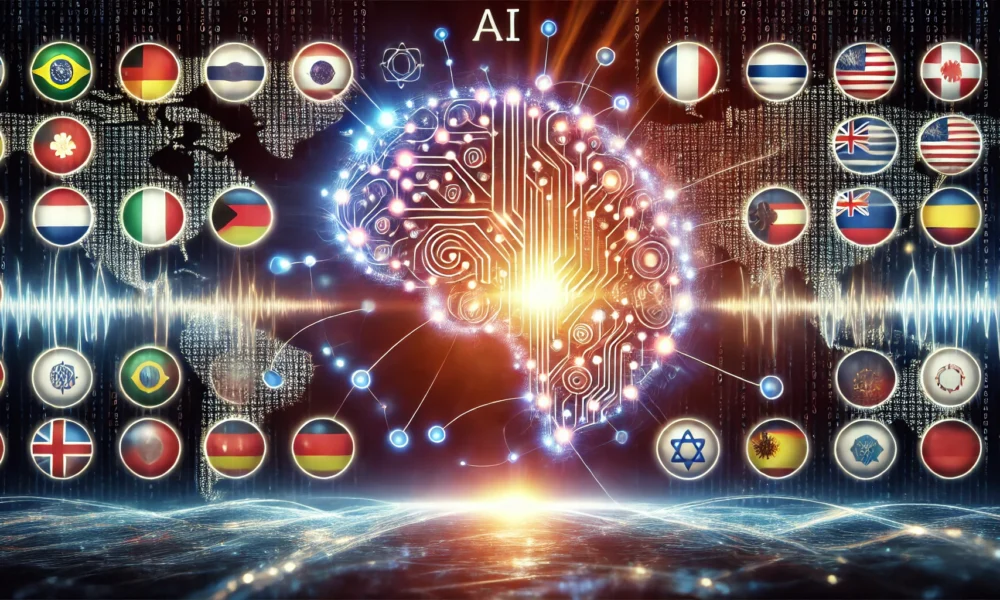Unlocking the Future of AI: China’s Rise with DeepSeek AI
Artificial Intelligence (AI) is no longer just a technological breakthrough but a battleground for global power, economic influence, and national security. The U.S. has led the AI revolution for years, with companies like OpenAI, Google DeepMind, and Microsoft leading the way in machine learning. But with China aggressively expanding its investments in AI, a new contender has emerged, sparking debates about the future of global AI dominance.
DeepSeek AI is not an accidental development but a strategic initiative within China’s broader AI ambitions. Developed by a leading Chinese AI research team, DeepSeek AI has emerged as a direct competitor to OpenAI and Google DeepMind, aligning with China’s vision of becoming the world leader in AI by 2030.
According to Kai-Fu Lee, AI investor and former Google China President, China has the data, talent, and government support to overtake the U.S. in AI. “The AI race will not be won by the best technology alone but by the country with the most strategic AI deployment. China is winning that battle,” he argues.
Open-Source Accessibility and Expert Perspectives
One of DeepSeek AI’s most disruptive features is its open-source nature, making AI more accessible than proprietary models like GPT-4. Unlike GPT-4, which requires advanced GPUs, DeepSeek AI runs on less sophisticated hardware, enabling businesses with limited computational resources to adopt AI solutions. Moreover, its open-source accessibility also encourages global developers to contribute to and improve the model, promoting a collaborative AI ecosystem.
Elon Musk has expressed strong skepticism regarding DeepSeek AI’s claims. While many tech leaders have praised its achievements, Musk questioned the company’s transparency, particularly regarding hardware usage.
Is the AI Race Tilting in China’s Favor?
China is rapidly advancing in the AI race, particularly with the emergence of DeepSeek AI. China’s 14th Five-Year Plan (2021-2025) prioritizes AI as a strategic frontier industry, reinforcing its ambition to lead globally by 2030.
Hype vs. Reality: Assessing DeepSeek AI’s True Impact
DeepSeek AI has gained attention in the AI sector, with many considering it a significant development. Its primary advantage is its efficient use of resources, which could reduce business infrastructure costs. By adopting an open-source approach, it allows for rapid growth and customization. Industries such as finance, healthcare, automation, and cybersecurity could benefit from its capabilities.
The Bottom Line
DeepSeek AI represents a significant step in China’s AI ambitions, challenging Western AI leaders and reshaping the industry. Its open-source approach makes AI more accessible and raises security and governance concerns. While some experts consider it a significant disruptor, others caution against overestimating its long-term impact.
-
Question: What is the Global Power Shift?
Answer: The Global Power Shift refers to the changes happening in the distribution of power and influence on a global scale, as countries, organizations, and individuals adapt to new technologies, economic trends, and geopolitical shifts. -
Question: Is the Global Power Shift just hype or a reality?
Answer: The Global Power Shift is both hype and reality. While there is a lot of talk and speculation about the changes happening in the global power dynamics, there are also tangible shifts occurring in terms of economic, political, and social power structures. -
Question: How is DeepSeek AI impacting the Global Power Shift?
Answer: DeepSeek AI is playing a significant role in the Global Power Shift by empowering organizations and individuals to access and analyze massive amounts of data in real-time, enabling them to make informed decisions and stay ahead of the curve in a rapidly changing world. -
Question: What challenges does the Global Power Shift present?
Answer: The Global Power Shift presents numerous challenges, including increased competition for resources, the rise of new global powers, and the need for greater collaboration and communication among nations and organizations. - Question: How can individuals and organizations adapt to the Global Power Shift?
Answer: To adapt to the Global Power Shift, individuals and organizations must embrace innovation, develop new skills, build strategic partnerships, and remain agile in their decision-making processes. By staying informed and proactive, they can navigate the changing global landscape and thrive in the midst of uncertainty.



